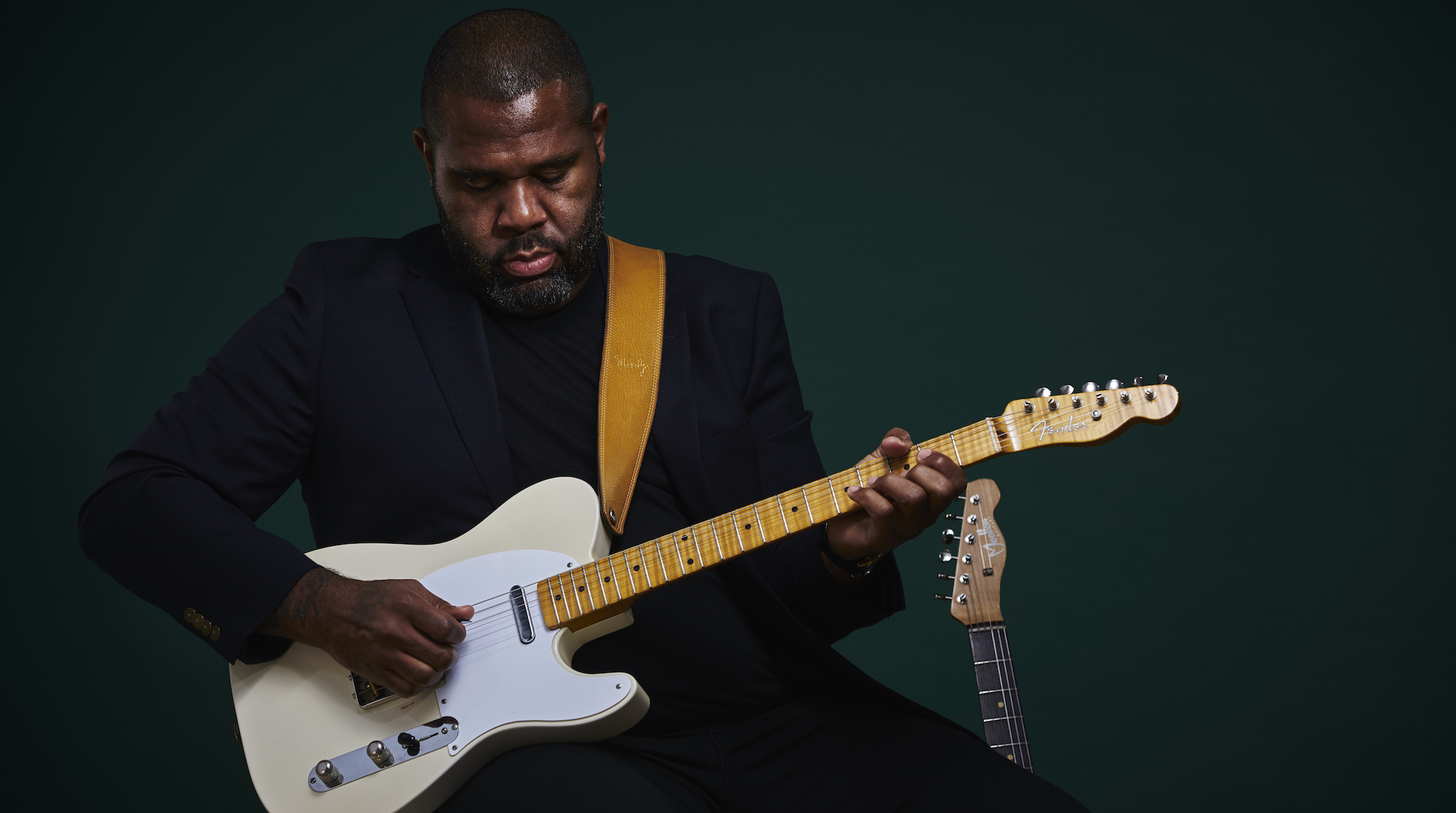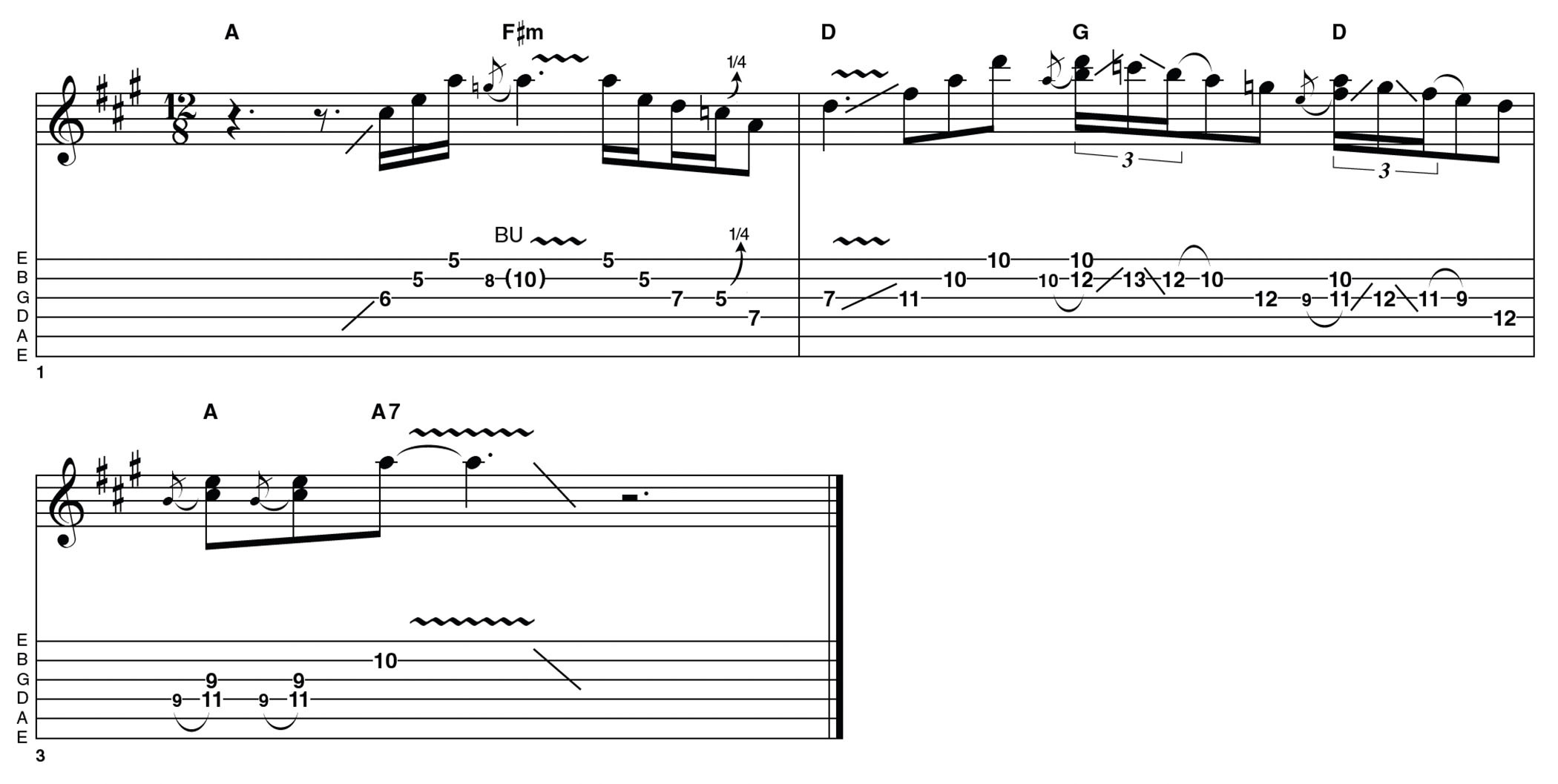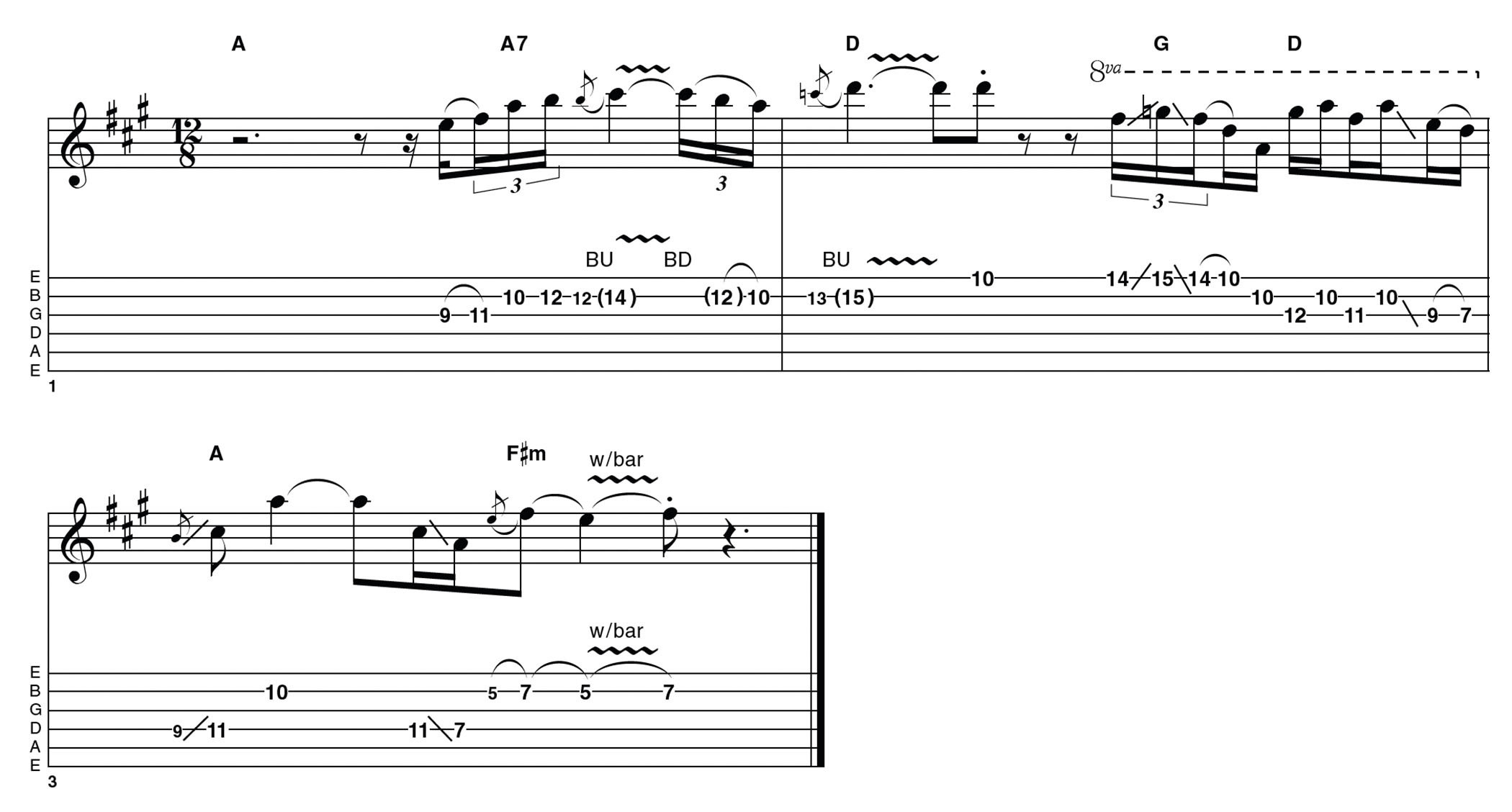How to solo using the CAGED scale
Using partial chords and doublestops with regular pentatonics, this lesson offers a soloing strategy that's easy on the tendons and big on expression

In case the title had you wondering, CAGED is an acronym comprising five essential chord shapes. Though these are easiest (by far) to play in the open position, the shapes give us patterns to work with all over the fretboard.
Barre chords using the E and A shapes are the most common and easily used examples, but the point here is not to play whole chords, just to be aware of where the shapes occur on the fretboard.
A good example – and one I’ve used frequently in the solo below – is the open C chord shape in a few different positions. Doing this with a barre is not the most practical or attractive proposal, neither is it necessary.
By viewing the notes in the chord as a pattern such as the pentatonic, or breaking it down into two- or three-note shapes, you can save your tendons and incorporate arpeggio-style lines, doublestops and triads.
While we’re looking at the C shape, try playing through shape 3 of the major pentatonic (identical to shape 4 of the minor pentatonic) and you may notice that the C shape is actually part and parcel of it; we’re just viewing the notes from a slightly different angle. Little Wing and Electric Ladyland both feature numerous examples of the CAGED chords and pentatonic shapes being combined, albeit leaning towards a more chordal approach.
In this solo, I’ve used partial chords and doublestops in addition to the regular pentatonic shapes they are nested within. It can take a little adjustment to view patterns like these as part of a shape that you aren’t actually playing in full!
It might be helpful in some cases to place your fingers on all the notes of the chord at once – with the understanding that this is a device to help programme the brain and fingers, rather than make unrealistic demands of them… Hope you enjoy and see you next time.
Example 1

It’s fairly easy to keep up with what’s going on here. The first doublestop can be viewed as part of a C chord shape, which would have its root note at the 12th fret of the A string.
By the same token, you could say I’m combining two notes from shape 3 of the A major pentatonic! I then slide down two frets to transpose the idea to G, leading to a third doublestop based around shape 4 of the D major pentatonic. The single-note line at the end implies a Dsus4, before landing on part of an A major chord.
Example 2

I’m taking a bit of a liberty here by using the A minor pentatonic over A major then F# minor. I get away with this by pushing any C naturals slightly sharp – a BB King-style move that stops everything sounding too ‘major’. The slides are inspired by Matt Schofield.
The rest of this phrase uses parts of an ‘A’ shape barre chord at the 10th to 12th fret giving us a G chord then part of an ‘E’ shape (albeit well disguised) in that same position. That last triad is derived from the same ‘C’ shape that began Example 1, just using three notes rather than two.
Example 3

This example jumps around a bit: part inspiration (aka bluff!) and partly through mixing the CAGED chord approach already described and adding in some more ‘straight’ pentatonic licks.
These ideas are not meant to replace those, after all. Later, some wider-spaced slides combine pentatonic shapes and imply Dsus4 again, referring to the chord in the backing. The change of position for the last phrase hints at where we’ll be heading in the final example.
Example 4

Some doublestops based around shape 1 of the A major pentatonic kick things off, but as the phrase progresses you’ll see it’s also based around the ‘E’ shape A major chord that lives in the same space.
The key is to have the confidence to move in and out of the shapes without losing track of where you are. Keeping the nearby pentatonic shapes in mind will help with this – so will playing, taking risks and making mental notes!
Hear it here
Matt Schofield – Far As I Can See
The combination of chordal and pentatonic ideas is integral not just to Matt’s solos but his chord figures and embellishments. Check out Clean Break to hear this in action.
The Day You Left also clearly displays how comfortable he is mixing CAGED/chordal and pentatonic approaches. You’ll also hear this happening fast on the uptempo swing of Everything; the harmony and chordal structure is there, but you’ll hardly, if ever, hear a whole chord explicitly played.
Kirk Fletcher – Shades Of Blue
Kirk really is a master of combining chordal and pentatonic ideas seamlessly in a variety of musical scenarios. Check out his aggressive Chuck Berry-tinged playing on Blues For Boo Boo.
Country Girl showcases how he can keep the rhythm part harmonically detailed and driving in a more ‘standard’ blues context, also finding the time to add fills between vocal lines. Finally, have a listen to his funky doublestops and melodic pentatonic lines on The River’s Invitation.
John Mayer Trio – Try!
There is (quite correctly) much talk at the moment of John’s latest release, Sob Rock. However, hearing him on this live album in a less produced context is also impressive.
Check out Who Did You Think I Was, Wait Until Tomorrow and Daughters to hear him integrate chordal harmony, pentatonics and funky chord patterns without missing a beat. There is no place to hide in a trio format, but there’s also the opportunity to step up and shine.
Get The Pick Newsletter
All the latest guitar news, interviews, lessons, reviews, deals and more, direct to your inbox!
As well as a longtime contributor to Guitarist and Guitar Techniques, Richard is Tony Hadley’s longstanding guitarist, and has worked with everyone from Roger Daltrey to Ronan Keating.
“There are so many sounds to be discovered when you get away from using a pick”: Jared James Nichols shows you how to add “snap, crackle and pop” to your playing with banjo rolls and string snaps
Don't let chord inversions bamboozle you. It's simply the case of shuffling the notes around








![Joe Bonamassa [left] wears a deep blue suit and polka-dotted shirt and plays his green refin Strat; the late Irish blues legend Rory Gallagher [right] screams and inflicts some punishment on his heavily worn number one Stratocaster.](https://cdn.mos.cms.futurecdn.net/cw28h7UBcTVfTLs7p7eiLe.jpg)


